
| Самолеты (сортировка по:) | |||||
| Страна | Конструктор | Название | Год | Фото | Текст |
Nieuport Nieuport-11/16/18 Bebe
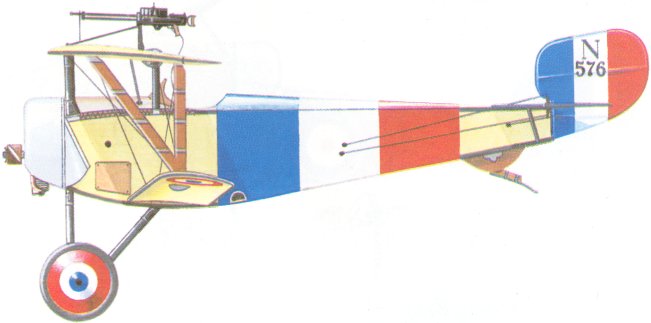
|
Страна: Франция Год: 1915
Истребитель |
| Nieuport - Nieuport-10 - 1915 - Франция | <– | –> | Nieuport - Nieuport-12/13/14 - 1915 - Франция |
 |
В.Кондратьев - Самолеты первой мировой войны |
| Ньюпор 11, эскадрилья N-67, пилот - су-лейтенант Ж.Наварр, 1916г. |
 |
J.Bruce - Nieuport Fighters /Albatros/ |
| NIEUPORT 11, N.576, Sous Lt. J Navarre, Escadrille N.67, 1916. Finished in clear-doped fabric or pale yellow overall with natural metal cowling and cheek fairings. All surfaces outlined in an undefined colour, French roundels in six positions with white areas of upper wing markings apparently omitted. Fuselage and wheel decor emphasises the nationality of both machine and pilot. |
 |
А.Шепс - Самолеты Первой мировой войны. Страны Антанты |
| Истребитель "Ньюпор-11" французских ВВС (1915г.) |
 |
А.Шепс - Самолеты Первой мировой войны. Страны Антанты |
| "Ньюпор-11" с новым капотом и коком винта |
 |
А.Шепс - Самолеты Первой мировой войны. Страны Антанты |
| "Ньюпор-11" с ракетами "Ле Прие" (1915г.) |
 |
Сайт - Pilots-and-planes /WWW/ |
| N1135 was a Nie 11 serving with Escadrille N.26. This aircraft was lost on July 9, 1916 |
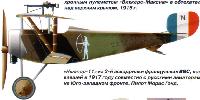 |
В.Кондратьев - Самолеты первой мировой войны |
| "Ньюпор-11" из 3-й эскадрильи французских ВВС, воевавшей в 1917 году совместно с русскими авиаторами на Юго-западном фронте. Пилот Морис Гонд. |
 |
В.Обухович, А.Никифоров - Самолеты Первой Мировой войны |
| Ньюпор 11 |
 |
J.Bruce - Nieuport Fighters /Albatros/ |
| NIEUPORT 11, 3983, Flt. Cmdr. K S Savory, No. 2 Wing RNAS, 1915. Finished in clear-doped fabric or pale yellow overall initially, 3983 was modified and had some areas repainted blue as shown. Photographic evidence reveals that in RNAS service the aeroplane retained its original French identity markings, at least for a time. |
 |
J.Bruce - Nieuport Fighters /Albatros/ |
| NIEUPORT 16, 5172, Lt. WJC Kennedy-Cochran-Patrick, No.l AD, 1916. Upper surfaces in sprayed green/brown camouflage (pattern undefined) with clear-doped or pale yellow under surfaces, the latter narrowly outlined in an unspecified dark colour. Natural metal cowling, cheek panels and spinner, RFC roundels in six positions, absent on fuselage sides. |
 |
А.Шепс - Самолеты Первой мировой войны. Страны Антанты |
| "Ньюпор-11" постройки завода "Дукс" с пулеметной установкой В.В.Иордана (1916г.) |
 |
W.Green, G.Swanborough - The Complete Book of Fighters |
| An Nie 11 of the Romanian Sqn, September 1917. |
 |
J.Bruce - Nieuport Fighters /Albatros/ |
| NIEUPORT 11, serial unknown, Adjt. T Franchomme, 5eme Escadrille, 1916. Finished in clear-doped fabric or pale yellow overall with natural metal cowling and cheek fairings. Belgian roundels in six positions, wheel discs painted in a red and white chequerboard pattern. |
 |
J.Bruce - Nieuport Fighters /Albatros/ |
| NIEUPORT 11, Ni 1763, pilot unknown, 75* Squadriglia, 1916. Finished in clear-doped fabric or pale yellow overall with natural metal cowling and cheek fairings, upper area of forward fuselage may have been varnished. National colours applied to rudder, wing under surfaces and additionally behind cockpit - no upper wing roundels. All surfaces narrowly outlined with an unknown colour - shown here dark brown. |
 |
J.Bruce - Nieuport Fighters /Albatros/ |
| NIEUPORT 16, N.1407, Adjt. E Robaert, Unit unknown, 1916. Upper surfaces in sprayed green/brown camouflage (pattern undefined) with clear-doped fabric or pale yellow under surfaces. Natural metal cowling and cheek fairings. Belgian roundels in six positions; photos indicate that the original French rudder stripes and serial were retained for a while before being overpainted in Belgian colours. |
 |
J.Davilla - Italian Aviation in the First World War. Vol.3: Aircraft M-W /Centennial Perspective/ (75) |
| Nieuport 11 Ni.1440, 76a Squadriglia |
 |
J.Davilla - Italian Aviation in the First World War. Vol.3: Aircraft M-W /Centennial Perspective/ (75) |
| Nieuport 11 Ni.1636, 76a Squadriglia |
 |
J.Davilla - Italian Aviation in the First World War. Vol.3: Aircraft M-W /Centennial Perspective/ (75) |
| Nieuport 11 Ni.1763, 76a Squadriglia |
 |
J.Davilla - Italian Aviation in the First World War. Vol.3: Aircraft M-W /Centennial Perspective/ (75) |
| Nieuport 11 Ni.2123, S/Ten. Alvaro Leonardi, 80a Squadriglia, 1917 |
 |
E.Hauke, W.Schroeder, B.Totschinger - Die Flugzeuge der k.u.k. Luftfahrtruppe und Seeflieger 1914-1918 |
| Nieuport 11 (Nr. 1615) 00.27 |
 |
J.Bruce - Nieuport Fighters /Albatros/ |
| The prototype Nie.11 was unarmed and unnumbered. Its rear central support for the upper wing was of inverted-U form, possibly to minimize obstruction of the pilot's forward view. In side elevation the V-struts of the undercarriage were rather wide, and the elevators were small. |
 |
Сайт - Pilots-and-planes /WWW/ |
| Первый невооруженный прототип "Ньюпора-11" с французскими военными эмблемами, 1915 г. The unarmed and unnumbered Nieuport 11 prototype. The elevators were smaller than those which would later become standard and the spread of the undercarriage V braces are somenhat greater here. The rear center section struts just in front of the cockpit are an inverted 'U' shape, probably to improve the view from the cockpit. The national markings are French |
 |
J.Bruce - Nieuport Fighters /Albatros/ |
| The modified Nie.11 that had the revised wing-bracing configuration illustrated diagrammatically in Maurice Percheron’s book mentioned in the text, and unreliably attributed by him to a probably non-existent Nieuport Type 18. |
 |
J.Bruce - Nieuport Fighters /Albatros/ |
| N1324 was a Nie.11 of Escadrille N.35 that came down intact in German-held territory on July 6 1916, when Lt. Jean Raty was shot down by Lin. Kurt Student of the Fokker-Staffel of the III Army. It had no roundels on the upper surface of the top wing. |
 |
J.Bruce - Nieuport Fighters /Albatros/ |
| N1817 was a Nie.11 of a French unit in the Dardanelles area. |
 |
J.Bruce - Nieuport Fighters /Albatros/ |
| It is said that the occupant of this Nie.11 is Jean Navarre. This aircraft was armed with a fixed Lewis gun, presumably with the Alkan synchronizing mechanism. |
 |
Сайт - Pilots-and-planes /WWW/ |
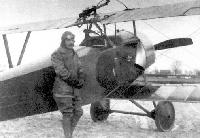 |
В.Обухович, А.Никифоров - Самолеты Первой Мировой войны |
 |
Сайт - Pilots-and-planes /WWW/ |
 |
Сайт - Pilots-and-planes /WWW/ |
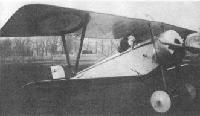 |
В.Обухович, А.Никифоров - Самолеты Первой Мировой войны |
 |
Сайт - Pilots-and-planes /WWW/ |
 |
J.Bruce - Nieuport Fighters /Albatros/ |
| On July 3 1916, Capitaine le Comte J L V de Plandes Sieyes de Veynes of Escadrille N.26 was brought down in the German lines between Flers and Douai. His Nie.11 N1135, broke its tailskid but apparently was otherwise undamaged. |
 |
K.Delve - World War One in the Air /Crowood/ |
| Nieuport 11 in German hands. |
 |
Сайт - Pilots-and-planes /WWW/ |
| This Nie.11 (N1317), operating with a French unit in the Dardanelles, is having its 80-hp Le Rhone rotary engine serviced |
 |
Сайт - Pilots-and-planes /WWW/ |
| It is unclear what national markings this Nie.11 carries, but interestingly the aircraft armed with twin machine guns. The wheel discs are believed to have been red |
 |
J.Bruce - Nieuport Fighters /Albatros/ |
| It soon became evident that the Nie.11 was underpowered. In what might now seem to have been a quick-fix expedient, the airframe was modified to take the 110-hp Le Rhone 9J engine. Apart from the engine, the only visible difference was the addition of a head fairing behind the cockpit. This was the Nie.16, which began to enter service in Spring 1916. N830, the subject of this photograph, was one of the Nieuports flown by Jean Navarre. |
 |
J.Bruce - Nieuport Fighters /Albatros/ |
| The installation of the 110-hp Le Rhone in the Nie.16 of Sergent Bernay, its cowling bearing the somewhat macabre marking of a winged skull, flanked by a plus sign to starboard and a minus (concealed by the airscrew blade) to port. Visible in this photograph are light chordwise battens securing the fabric to the ribs of upper and lower wings in the flow of the slipstream. |
 |
J.Bruce - Nieuport Fighters /Albatros/ |
| This photograph have as its subject an unusual Nie.11. This aircraft had, under its lower wings, brackets for flares: these appeared to be very similar to the Holt flare brackets fitted to many British aircraft of the time. The front view shows an unusual supplementary under-cowling fitted under the gap in the otherwise cutaway engine cowling. It seems possible that this might have been a flame shroud or damper, and that the Nieuport had been modified to serve as a night fighter. Unfortunately, the identity of the aircraft’s unit is not known, but it is thought that the photographs might have been taken in the Dunkerque area. |
 |
J.Bruce - Nieuport Fighters /Albatros/ |
| This photograph have as its subject an unusual Nie.11. It seems possible that the Nieuport had been modified to serve as a night fighter. Unfortunately, the identity of the aircraft’s unit is not known, but it is thought that the photographs might have been taken in the Dunkerque area. |
 |
K.Delve - World War One in the Air /Crowood/ |
| Nieuport 11 established a good reputation and the basic Nieuport design characteristics began to appear in a number of aircraft; these are at Luxeuil in May 1916. |
 |
H.Cowin - Aviation Pioneers /Osprey/ |
| The spritely little Nieuport 11 Bebe single seater had been designed during the summer of 1914 to compete in that year's James Gordon Bennett air race, an event that was, sadly, overtaken by the war. Happily, however, the military were impressed by the Bebe's speed and agility, with, in chronological order of purchase, the Governments of Britain, France, Belgium, Italy and Russia buying it for use as a fast, unarmed scout. Initially ordered in relatively small numbers, the Bebe's sales prospects went sky high when in the summer of 1915, this brainchild of Gustav Delage was to make its debut fitted with an overwing .303 inch Lewis gun that fired forward and above the propeller arc. This may have meant the pilot was temporarily distracted by having to swing the gun backwards and down through an arc each time he needed to reload, but this was far outweighed by the benefit of a higher 'burst' rate of fire, unimpeded as the weapon was by interrupter or synchronising gear. Powered by an 80hp Le Rhone, the Bebes had a top level speed of 97mph at sea level, along with an impressive rate of climb and a 15,000 feet ceiling. When the Bebe became operational towards the close of 1915, it, along with the Airco DH 2, were soon to turn the air superiority tide in favour of the Allies, with the Bebe, in particular, proving more than a match for the previously dreaded Fokker Eindekker. This said, the machine did have a pitfall and a potentially fatal one at that in the guise of its 'V interplane strut and its lower mainplane pick-up. If over-stressed, this weak element could cause shedding of the lower wing, which in parting with the rest of the airframe frequently and unsurprisingly caused a progressive failure of the machine's overall structure and the inevitable loss of the pilot's life. Bebe pilots therefore needed to learn not to wrestle the controls too hard at high speed, or pay the ultimate penalty. |
 |
J.Bruce - Nieuport Fighters /Albatros/ |
| Contemporary captions stated that this distinctively marked Nie.11 was one of the aircraft flown by Jean Navarre of Escadrille N.67 in his unremitting defensive flying during the Battle of Verdun. |
 |
Сайт - Pilots-and-planes /WWW/ |
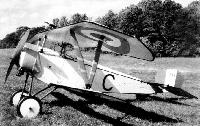 |
В.Кондратьев - Самолеты первой мировой войны |
| Современный снимок восстановленного "Ньюпора-11" с курсовым пулеметом "Кольт" над верхним крылом. |
 |
J.Bruce - Nieuport Fighters /Albatros/ |
| Serving with the RNAS, 3983 was delivered to the Dunkerque Depot late in 1915. Initially allocated to No.l Wing by December 2 1915, it was soon transferred to No.2 Wing. For a time at least it was flown by Flight Commander K S Savory and was known as his Blue Bird. The aircraft's fuselage was refined by fitting side fairings behind the engine cowling in place of the original oil deflectors: these fairings resembled those of (and might have been taken from) the contemporary Bristol Scout C. This photograph suggests that the forward fuselage and mainplanes were coloured, doubtless blue, though here a replacement starboard aileron had not been painted to match the wing. This Nie.11 was lost on January 14 1917, when Flight Lieutenant W H Peberdy failed to return from a mission over Born Lake. |
 |
J.Bruce - Nieuport Fighters /Albatros/ |
| The known Service history of Nie.11 3993 indicates that it spent most of its RNAS life at or near Dunkerque, where it was with No.l Wing by February |
 |
J.Bruce - Nieuport Fighters /Albatros/ |
| Second aircraft of the batch of Nie.16s received by the RFC from the RNAS, No.5172 had originally had the RNAS serial 9155. Here it is seen at No.1 AD, St-Omer, on April 26 1916; the cheerful occupant of its cockpit is Lt. W J C Kennedy-Cochran-Patrick, one of the finest pilots of his time. Remarkably, the Nieuport had a conventional spinner, not a cone de penetration. No.5172 went to No.l Squadron RFC, on July 4 1916, and was struck off the squadron’s strength on August 5. It was reported at No.1 AD on September 1, and was issued to No.60 Squadron from No.2 AD, Candas, on September 25. Five days later, 2/Lt. C H M King crashed fatally during air-to-ground firing practice; the wrecked airframe was sent to No.2 AD on October 1 1916, and was written off next day. |
 |
J.Bruce - Nieuport Fighters /Albatros/ |
| Twin overwing Lewis guns on a double mounting on an RNAS Nie.11. Also of interest is the fact that the instruments appear to be grouped together on a panel in the cockpit, which was not the case on early Nieuports when they left the factory. |
 |
J.Bruce - Nieuport Fighters /Albatros/ |
| Another twin-gun installation on an RNAS Nie.11, demonstrating that the guns could be lowered for magazine changing and upward firing. The staining on the fuselage suggests that the oil deflector was not doing as much deflecting as was desirable. |
 |
J.Bruce - Nieuport Fighters /Albatros/ |
| The RNAS pilots at Dunkerque made various attempts to improve and increase the armament of their Nieuports. This installation of twin Lewis guns on 3981/N593 must have taxed the Nie.11's 80-hp Le Rhone severely. No.3981 had a considerable career, operating from Dunkerque as an aircraft of ‘A' Squadron. On February 20 1916, Flight Sub-Lieutenant R S Dallas destroyed an enemy two-seater, and nine days later FSL H R Simms shot down an LVG two-seater in flames. Dallas destroyed another two-seater on April 23. No.3981 survived combat damage on that date, and a later crash that Summer. By January 11 1917, it was with No.6 (Naval) Squadron, but FSL G P Powles had to make a forced landing in Dutch territory on February 26. The Nieuport was taken over by the Luchtvaarl Afdeling, initially as LA40 and subsequently as N213 and N230. |
 |
K.Delve - World War One in the Air /Crowood/ |
| Following on from earlier Nieuports in RNAS service, the Nieuport 11 Bebe' is here as '3982 of 2 Squadron RNAS - part of 1 Wing at Dunkirk. The Bebe became operational with Escadrille N3 in January 1916 and was an immediate success. |
 |
O.Thetford - British Naval Aircraft since 1912 /Putnam/ |
 |
J.Bruce - Nieuport Fighters /Albatros/ |
| One of No.11 Squadron’s Nie.16s flown by Albert Ball, A134 (ex-N995) had been transferred from the RNAS on April 14 1916. It went to No.11 Squadron from No.2 AD on June 21; and on July 2 Ball shot down a Roland C.II and an Aviatik two-seater, both of which crashed. Next day, with A134 armed with Le Prieur rockets, Ball attacked an observation balloon near Pelves but failed to set it alight. A134 returned to No.2 AD on August 11. |
 |
J.Bruce - Nieuport Fighters /Albatros/ |
| Nieuport Type 11 N1290, flown by Sergent Lawrence Rumsey of the Escadrille americaine, photographed at Behonne, near Bar-le-Duc, in September 1916. Each upper mainplane has a swept-back diagonal white stripe, but no roundel. It is not known whether the (apparently) white elevators and port lower mainplane were intentionally so coloured or left unpainted; or were so merely because they were recently-fitted replacement components. |
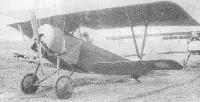 |
В.Кондратьев - Самолеты первой мировой войны |
| "Ньюпор" 11 в России. |
 |
В.Кондратьев - Самолеты первой мировой войны |
| Типичное расположение ОЗ на истребителе "Ньюпор-11" русской сборки. A Russian Nie.16, painted in a dark finish and armed with a Lewis gun on a modified Moreau mounting. |
 |
J.Bruce - Nieuport Fighters /Albatros/ |
| Typical of French-built Nie.11s in Russian service was N1161 of the 12th Fighter Squadron at Riga, photographed during Winter 1916-1917. Its pilot was Staff Captain Nadeshdin. |
 |
В.Шавров - История конструкций самолетов в СССР до 1938 г. |
| "Ньюпор-XI" ("Бебе") |
 |
J.Bruce - Nieuport Fighters /Albatros/ |
| Two Nie.11s and a Morane-Saulnier Type N of a Russian fighter squadron. The Nieuports, which are of standard form without head fairings and have Moreau gun mountings, were probably French-built. Nieuports 10, 11, 16, 17, 23 and 24bis were produced in Tsarist Russia, the Nie.11 by the Duks, Shchetinin and Anatra concerns. Russian-built Nieuports were some 30kg (66 lb) heavier than their French counterparts, largely because pine replaced much spruce in the airframe, and heavier linen fabric was used for the covering. They also had a head fairing behind the cockpit, a detail that can make it difficult to distinguish Russian Nie.11s from Nie.16s. On some Russian Nie.11s the Lewis gun was on a mounting devised by Vasili V Yordan, Chief of Aviation Base of the 8th Russian Field Army. |
 |
J.Bruce - Nieuport Fighters /Albatros/ |
| A Belgian Nie.16 with twin overwing Lewis guns, an unusual weapon installation on this particular type of Nieuport. The occupant here is believed to be Jan Olieslagers. |
 |
J.Bruce - Nieuport Fighters /Albatros/ |
| Two Nie.11s of contrasting hues but bearing the same legend Soil! (So be it!). The officer beside the dark-coloured Nieuport is said to be Edmond Thieffry. |
 |
J.Bruce - Nieuport Fighters /Albatros/ |
| Two Nie.11s of contrasting hues but bearing the same legend Soil! (So be it!). Standing by the light-coloured aircraft is Lt.P Anciaux of the 1" Escadrille of the Aviation militaire beige. |
 |
J.Bruce - Nieuport Fighters /Albatros/ |
| This Belgian Nie.11 flown by Teddy Franchomme had on its wheel cover a red/white checkerboard marking. |
 |
K.Delve - World War One in the Air /Crowood/ |
| Besides being used extensively by both the French and British forces, the Nieuport 11 was to provide the backbone of other Allied nations' fighter forces, including those of Belgium, Italy and Russia. Shown here is an Italian unit equipped with the type, which served as Italy's standard fighter from its initial deployment with them during the summer of 1916 to mid-1917. In the case of Italy, the Nieuport 11's role extended beyond its operational use, as 450 of these machines were produced under licence in Italy by Nieuport-Macchi. Thus, it could be said that this nimble little machine not only helped secure Italian skies, but played no small part in helping establish the country's future aeronautical industrial base. |
 |
H.Cowin - Aviation Pioneers /Osprey/ |
| The sleek, diminutive Nieuport 11 Bebe provided the backbone of the Italian Military Air Services' fighter squadrons for around eighteen months prior to its being superseded by the SPAD S VII from mid-1917. Built under licence in Italy, by Nieuport-Macchi, the Italian machines carried their serial numbers on the fuselage, just aft and below the cockpit. The machine seen here carries the serial no Ni 3227. |
 |
J.Davilla - Italian Aviation in the First World War. Vol.3: Aircraft M-W /Centennial Perspective/ (75) |
| Nieuport 11 #2352. |
 |
J.Davilla - Italian Aviation in the First World War. Vol.3: Aircraft M-W /Centennial Perspective/ (75) |
| Nieuport 11 flown by Baracca to score his first victory. |
 |
J.Davilla - Italian Aviation in the First World War. Vol.3: Aircraft M-W /Centennial Perspective/ (75) |
| Ace Giannino Ancillotto after his feat of flying through a burning Austrian balloon. |
 |
K.Delve - World War One in the Air /Crowood/ |
| The Macchi-built Nieuport 11, of which almost 650 were built under licence, was a standard fighter with the Italians up to the summer of 1917. |
 |
W.Green, G.Swanborough - The Complete Book of Fighters |
| An Nie 11 built by Nieuport-Macchi in Italy. |
 |
J.Davilla - Italian Aviation in the First World War. Vol.3: Aircraft M-W /Centennial Perspective/ (75) |
| Sergente Giovanni Bartolomeo Arrigoni of 76a Squadriglia warms up his Nieuport 11 #2187 on Borgnano airfield. The aircraft was the first effective fighter employed by the Italians, who obtained their first aerial victories with this type. Due to its dimensions the plane was often called Nieuportino (little Nieuport) (Aeronautica Militare) |
 |
J.Davilla - Italian Aviation in the First World War. Vol.3: Aircraft M-W /Centennial Perspective/ (75) |
| Nieuport 11 in Italian service. The engine cowling was painted in the Italian colors of red, white, and green. |
 |
J.Bruce - Nieuport Fighters /Albatros/ |
| An Italian Nie.11 with its engine cowling patriotically painted in red, white and green. Here Tenente Giorgio Pessi-Parvis stands before his aircraft of the 78" Squadriglia Caccia in 1917. He later went to the 81" Squadriglia and had a final victory tally of eight. |
 |
J.Davilla - Italian Aviation in the First World War. Vol.3: Aircraft M-W /Centennial Perspective/ (75) |
| Nieuport 11 in Italian service. The engine cowling was painted in the Italian colors of red, white, and green. |
 |
J.Bruce - Nieuport Fighters /Albatros/ |
| Caporale Paolo Benvenuti of the 82" Squadriglia with his Macchi-built Nie.11. The green, white and red segmentation of the engine cowling is clearly seen here. |
 |
J.Davilla - Italian Aviation in the First World War. Vol.1: Operations /Centennial Perspective/ (73) |
| Leading Italian ace Francesco Baracca at the start of his career as a fighter pilot standing alongside his Nie. 11, N.1451. He would score his first three victories in this aircraft. |
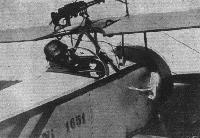 |
Журнал - Flight за 1917 г. |
| From "The War in Italy." - An Italian Nieuport biplane. |
 |
J.Davilla - Italian Aviation in the First World War. Vol.1: Operations /Centennial Perspective/ (73) |
| Alvaro Leonardi in his colorful N11. He was a very experienced pilot, having earned license No.61 in November 1915. He would become 80a Squadriglia's only official ace of the war. The 80a squadriglia aircraft each had their own version of Fortunello on the fuselage side. |
 |
J.Davilla - Italian Aviation in the First World War. Vol.3: Aircraft M-W /Centennial Perspective/ (75) |
| Nieuport 11 #2140 of 80a Squadriglia. |
 |
J.Bruce - Nieuport Fighters /Albatros/ |
| An Italian-built Nie. 11, Ni.1763. The coloured bands round the fuselage behind the cockpit must have been in the Italian national colours of red, white and green. |
 |
J.Davilla - Italian Aviation in the First World War. Vol.1: Operations /Centennial Perspective/ (73) |
| Italian Nieuport 11 fighters at the front, 1916. |
 |
J.Davilla - Italian Aviation in the First World War. Vol.3: Aircraft M-W /Centennial Perspective/ (75) |
| Nieuport 11s of 76a Squadriglia. |
 |
J.Davilla - Italian Aviation in the First World War. Vol.3: Aircraft M-W /Centennial Perspective/ (75) |
| Nieuport 11 #1636 of 76a Squadriglia with Le Prieur rockets. |
 |
Журнал - Flight за 1917 г. |
| FROM "THE WAR IN ITALY." - An Italian Nieuport biplane as seen from the front. |
 |
Jane's All The World Aircraft 1919 /Jane's/ |
| Back view of the Macchi-Nieuport, Le Rhone engine. |
 |
J.Davilla - Italian Aviation in the First World War. Vol.1: Operations /Centennial Perspective/ (73) |
| Caproni bomber and Nieuport fighter on an unidentified airfield. |
 |
E.Hauke, W.Schroeder, B.Totschinger - Die Flugzeuge der k.u.k. Luftfahrtruppe und Seeflieger 1914-1918 |
| Nieuport 11 Bebe, italienisches Beuteflugzeug, Flugzeugnummer 00.27 Nieuport 11 Bebe, итальянский трофейный самолет, номер самолета 00.27. |
 |
J.Davilla - Italian Aviation in the First World War. Vol.3: Aircraft M-W /Centennial Perspective/ (75) |
| Nieuport 11 in flight |
 |
J.Bruce - Nieuport Fighters /Albatros/ |
| The Nie.11 was produced in Italy by the Macchi company, which built 450. This impressive photograph of the interior of the Macchi works at Varese shows a remarkable number of Nieuport 11s and 17s in the course of assembly, their engine cowlings painted in red, white and green segments. Note the early doped flag markings on the suspended upper wing at right. |
 |
J.Bruce - Nieuport Fighters /Albatros/ |
| Following the Luchtvaart Afdeling's acquisition of the forced-landed RNAS 3981, the Dutch authorities ordered the production of 20 Nie.11s from the Nederlandsche Automobil en Vliegtuigfabriek Trompenburg. Twelve, originally numbered N214 - N225, and powered by 80-hp Thulin A engines, were delivered. It has been reported that these Dutch Nie.11 never entered service, being considered unsafe. At least two, one of which is seen here, nevertheless managed to acquire individual markings. Although renumbered N237 - N248, the Trompenburg Nieuports were written off in 1925. |
 |
Сайт - Pilots-and-planes /WWW/ |
| One of several Nie.11s that fell into German hands and were test flown. The armament has been removed and a small cone de penetration has been added to the airscrew boss. The extreme inboard position of the national markings under the lower wing is unusual |
 |
J.Bruce - Nieuport Fighters /Albatros/ |
| The overwing Lewis gun was still in place on this captured Nie.11 when it was photographed. Its port lower wing had been broken, presumably in a landing mishap. |
 |
Сайт - Pilots-and-planes /WWW/ |
| Repainted with national insignia of its captors, this Nie.11 has had its armament removed. Other Nieuports which fell into Austrian hands were often renumbered and flown in action |
 |
J.Bruce - Nieuport Fighters /Albatros/ |
| The Austrians, too, flew several captured Nieuports and gave them Austrian serial numbers. This Nie.11 was probably Italian-built. |
 |
В.Обухович, А.Никифоров - Самолеты Первой Мировой войны |
 |
Сайт - Pilots-and-planes /WWW/ |
| Nieuport 11, probably Italian-built, after capture by Austro-Hungarian forces and bearing the Austro-Hungarian serial 00.27 |
 |
J.Herris, J.Scott - Fokker Aircraft of WWI. Vol.2: Eindeckers /Centennial Perspective/ (52) |
| Student stated that he use this E.IV for his first 3 victories. Here he poses with his E.IV and his first conquest, a Nieuport 11, which he had brought down on 6 July 1916. Student had the latter armed with an LMG08 and marked with German crosses. (Peter M. Grosz collection/STDB) |
 |
J.Bruce - Nieuport Fighters /Albatros/ |
| A Nie.16 conspicuously marked Bebe, fully armed with eight Le Prieur rockets and the standard overwing Lewis gun. |
 |
Jane's All The World Aircraft 1919 /Jane's/ |
| A Nieuport Scout, with the Prieur Incendary Rockets in position. |
 |
Сайт - Pilots-and-planes /WWW/ |
| Французский истребитель "Ньюпор-16" с ракетами Ле-Прие / The rocket armed N959 in German hands. The ornate letter 'R' on the fuselage side of N959 was the insignia of the pilot flying it at the time of its capture, Adjutant Henri Reserval. This machine was later test flown by a number of German pilots |
 |
J.Bruce - Nieuport Fighters /Albatros/ |
| N1407, a Nie.16 of the Aviation militaire beige, with full pyrotechnic complement in place. Its pilot, Adjudant Egide Robaert, is seen with the aircraft, conspicuously named Fox-Trot. |
 |
W.Green, G.Swanborough - The Complete Book of Fighters |
| The Nieuport 16 proved to be an only partially successful attempt to extend the production life of the Ni 11 Bebe. To do this, the company replaced the Bebe's 80hp rotary with the bigger and heavier 110hp Le Rhone making the machine notoriously nose heavy, particularly with power off. Most Ni 16s ended their days by having their gun removed and replaced by eight Le Prieur rockets for use as 'Zeppelin chasers', as in the case of this French machine. |
 |
J.Bruce - Nieuport Fighters /Albatros/ |
| N959, a rocket-armed Nie.16, fell into German hands intact on May 22 1916, when Adjudanl Henri Reservat of Escadrille N.65 was shot down. The Germans studied N959 with great thoroughness, and the Nieuport was flown by German pilots. When this photograph was taken, the aircraft had a German airscrew. |
 |
J.Bruce - Nieuport Fighters /Albatros/ |
| Пусковая установка ракет Ле Прие представляла собой ряд алюминиевых трубок, закрепленных на межкрыльевых стойках. В эти трубки вставлялись штыри-стабилизаторы ракет. The starboard rocket launching tubes on N959. The installation of launching tubes, wiring, switches and Tudor BR.2 accumulator on the Nie.16 weighed approximately 14 kg (31 lb). Each tube was lm.500 in length; all were mounted at an angle of 17° 30' to the line of flight. The aircraft is N959 of Escadrille N.65. It was captured by the Germans on 22 May 1916. |
 |
Журнал - Flight за 1917 г. |
| Nieuport 1 1/2-plane,Type 16. The rockets are used for attacking kite balloons and airships. |
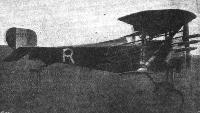 |
Журнал - Flight за 1917 г. |
| Side view of the Nieuport 1 1/2-plane,Type 16. |
 |
J.Herris - Siemens-Schuckert Aircraft of World War I /Centennial Perspective/ (12) |
| The prototype SSW D.I, 3503/16, wears small Eiserneskreuz markings on the upper wings reminiscent of the E.I marking style. At right appears to be a Nieuport 16 fuselage and engine cowl. |
 |
J.Bruce - Nieuport Fighters /Albatros/ |
| The forward fuselage of a Nie.11, a photograph that reveals details of the engine installation and of the provision of a fixed Lewis gun, presumably regulated by the Alkan mechanism, though the presence of a shoulder stock on the gun might indicate that this was an experimental mounting, or even a mock-up. |
 |
J.Bruce - Nieuport Fighters /Albatros/ |
| A German photograph of the 80-hp Le Rhone engine and its cowling on a captured Nie.11. |
 |
J.Bruce - Nieuport Fighters /Albatros/ |
| In the examination of captured Nieuport N959 the airframe was subsequently stripped and photographed. |
 |
J.Bruce - Nieuport Fighters /Albatros/ |
| The undercarriage of Nie.11 N653, seen in a German photograph of the captured aircraft. |
 |
J.Bruce - Nieuport Fighters /Albatros/ |
| The starboard interplane struts and cable bracing on captured Nie.11 N653. |
 |
J.Bruce - Nieuport Fighters /Albatros/ |
| N959’s cockpit area, a photograph that illustrates the upward angle of the Lewis gun permitted by its mounting, which is of a later type than the Moreau mounting. The two small ring-sights, probably of Le Prieur design, were presumably used for both gun and rockets, though French practice allowed for a rear sighting mark in paper, attached under mica to the windscreen transparency. |
 |
J.Bruce - Nieuport Fighters /Albatros/ |
| A clear picture of the Moreau type of mounting for the Lewis gun on a captured Nie.16. On this aircraft a bead sight was mounted on an arched cross-piece within the inverted-V strut. |
 |
В.Шавров - История конструкций самолетов в СССР до 1938 г. |
| Пулеметная установка В. В. Иордана на самолете "Ньюпор-XI" |
 |
J.Bruce - Nieuport Fighters /Albatros/ |
| Close up of the Moreau type mounting for the overwing Lewis gun on captured Nieuport 11 N1324 of Escadrille N. 35 |
 |
J.Bruce - Nieuport Fighters /Albatros/ |
| Bolder, or perhaps more desperate, spirits in No.2 Wing, RNAS, created this installation of twin fixed Lewis guns firing through (literally, one suspects) the airscrew on a Nie.11. Directly under the mostly opaque windshield can be seen storage for spare ammunition magazines. As these were all of only 47-round capacity, changes would have to be made frequently. |
 |
J.Bruce - Nieuport Fighters /Albatros/ |
| The other Nieuport on the cover is this Type 11 flown by Edmond Desclee - the wheel covers are marked with a red stripe over clear-dope or white. |
 |
J.Bruce - Nieuport Fighters /Albatros/ |
| Comets in the Sky Adjudant ‘Teddy’ Franchomme flying Nieuport 23 N5017 of the 5 Escadrille, Aviation Militaire Beige over the Front in 1917; his companion flying the Nieuport 11 is Edmond Desclee. The aeroplanes bear the unit's famous red comet marking the tail of which on Desclee’s machine bears the legend ‘ Va ou je te pousse’. |
 |
J.Davilla - Italian Aviation in the First World War. Vol.3: Aircraft M-W /Centennial Perspective/ (75) |
 |
Сайт - Pilots-and-planes /WWW/ |
 |
Сайт - Pilots-and-planes /WWW/ |
 |
O.Thetford - British Naval Aircraft since 1912 /Putnam/ |
| Nieuport 11 |
 |
W.Green, G.Swanborough - The Complete Book of Fighters |
| The Nie 11, popularly known as the Bebe. |
 |
В.Кондратьев - Самолеты первой мировой войны |
| Nieuport 11 |
 |
J.Bruce - Nieuport Fighters /Albatros/ |
| Nieuport Types 11 and 16 |
 |
J.Bruce - Nieuport Fighters /Albatros/ |
| Nieuport Types 11 and 16 |
 |
J.Bruce - Nieuport Fighters /Albatros/ |
 |
J.Davilla - Italian Aviation in the First World War. Vol.3: Aircraft M-W /Centennial Perspective/ (75) |
| Nieuport 11 |
 |
J.Davilla - Italian Aviation in the First World War. Vol.3: Aircraft M-W /Centennial Perspective/ (75) |
| Nieuport 11 |
 |
J.Davilla - Italian Aviation in the First World War. Vol.3: Aircraft M-W /Centennial Perspective/ (75) |
| Nieuport 11 |